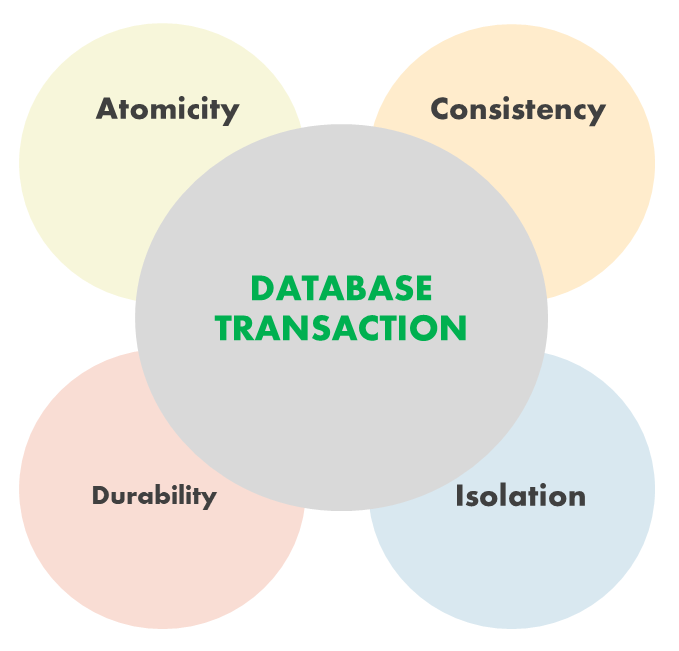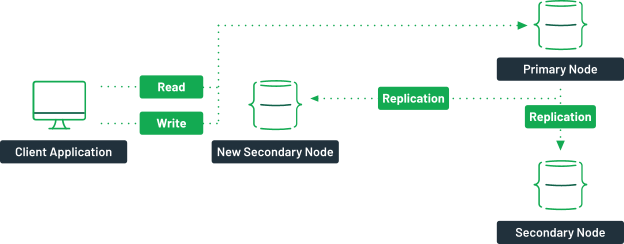Most popular relational databases today support “ACID” properties – Atomicity, Consistency, Isolation and Durability. Developers and DBAs (Database Administrators) working with databases have a good understanding of ACID behavior.
However, when working with NoSQL databases like MongoDB cloud, there are some key differences that are important for you to understand. MongoDB offers great flexibility in storage, schema, and scaling, but relaxes some of the ACID properties. It’s essential to understand the differences as you model your data and execute MongoDB commands.
ACID properties—Atomicity, Consistency, Isolation, Durability— are essential for data processing in database systems. They ensure transactions are either entirely successful or not executed at all, safeguarding data integrity.
With enterprises handling immense data, the need for rapid, trustworthy transactions becomes paramount. Handling real-time processing, concurrency, and business-critical transactional systems across multiple servers presents challenges. In this complex landscape, the importance of MongoDB’s support for multi-document ACID transactions continues to grow.
ACID Properties Explained
Databases treat single document transactions as a sequence of operations, ensuring the safe management of storing related data. ACID properties are at the heart of reliable processing, ensuring the database’s integrity even when concurrent transactions or disruptions occur.
Atomicity
Wikipedia defines Atomicity as follows – “In an atomic transaction, a series of database operations either all occur, or nothing occurs. A guarantee of atomicity prevents updates to the database from occurring only partially, which can cause greater problems than rejecting the whole series outright. In other words, atomicity means indivisibility and irreducibility”.
Atomicity ensures that all operations within a database transaction are treated as a single, indivisible unit. Either all the operations are executed or none are, ensuring there’s no halfway point where a transaction is left incomplete.
This principle is crucial for safeguarding the integrity of a database, especially in scenarios where system failures or crashes could occur mid-transaction. For example, in MongoDB, a write operation is atomic on the level of a single document transaction, even if the operation modifies multiple embedded documents within a single document.
In real-world applications, consider financial systems: if a bank transaction fails after debiting an account but before crediting another bank account, financial errors could occur. Atomicity ensures that such halfway scenarios are avoided. If any part of the transaction encounters an issue, the whole transaction is rolled back.
Atomicity works hand-in-hand with the other ACID properties. For instance, while atomicity ensures all-or-nothing execution, durability guarantees that once a transaction is committed, it remains so, even in the face of system failures.
Consistency
Consistency ensures that every transaction in a database brings it from one valid state to another. Before the start of a transaction, the database is in a consistent state, and it should return to this state once the transaction is completed. Any transaction, therefore, doesn’t violate predefined rules or constraints. If, for some reason, a transaction can’t meet these criteria, it’s rolled back, and the database remains unchanged.
While atomicity ensures all parts of a transaction complete or none do, consistency ensures the transaction maintains the database’s integrity. Together, they prevent databases from reaching unreliable states.
Isolation
Isolation addresses the issue of concurrency in databases. When multiple transactions occur simultaneously, isolation ensures that each one is executed in a way that it’s unaware of other concurrent transactions. This gives the illusion that transactions are processed sequentially.
Without proper isolation, simultaneous transactions could interfere with each other, leading to potential data corruption. By keeping transactions separate and unaware of each other, isolation ensures that each transaction maintains the database’s consistent state, even in a multi-user environment.
Durability
Durability promises that once a transaction is committed, it will remain so, even if the system crashes immediately afterward. The changes made during the transaction are permanent and won’t be lost due to any subsequent failures.
Post-transaction, any changes made are stored safely. This assurance is vital for trust in a DBMS. For businesses, this guarantees that once they receive a confirmation, the transaction, whether financial or otherwise, is settled and irreversible.
While atomicity ensures an all-or-nothing approach during transaction processing, durability ensures that this ‘all’ remains intact and unaffected by unforeseen system challenges, cementing the changes permanently.
What are ACID transactions?
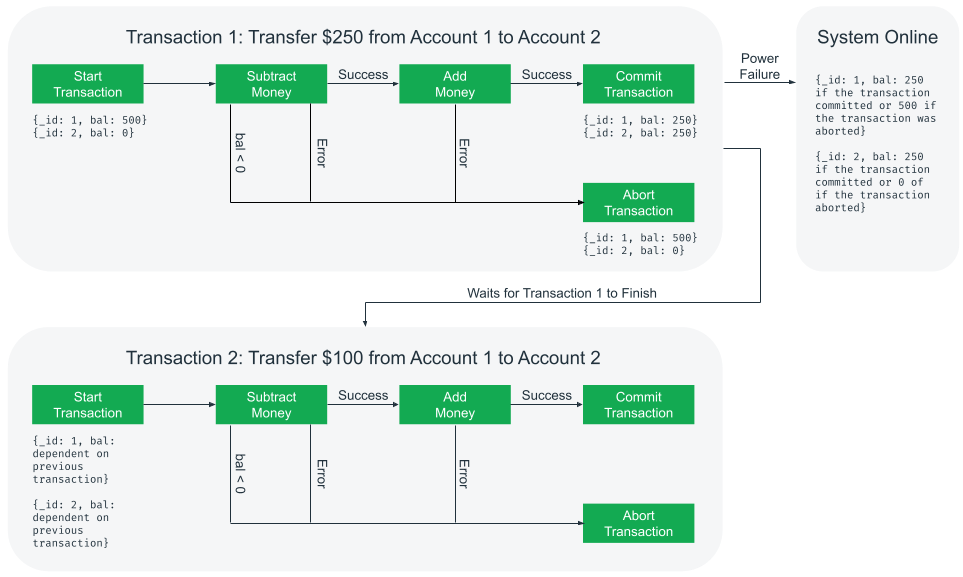
ACID transactions are closely intertwined with Database Management Systems (DBMS). These principles are put forth to maintain a high standard of data reliability within DBMS. By adhering to ACID properties, DBMS can ensure error-free transaction processing, even when facing multiple, simultaneous operations.
In an era of massive data influx, ensuring that data operations are consistent and reliable is vital. ACID transactions prevent data anomalies, providing a framework that safeguards data, which in turn reinforces trust in data-driven decisions.
ACID transaction example
Imagine a bank transaction where a user transfers money from savings to checking. Two operations are involved: debiting the savings account and crediting the checking account. If a serious system failure or crash occurs after the debit but before the credit, without ACID compliance, the money could vanish. Atomicity ensures that both operations are completed or none are, protecting the user’s funds.
In a relational database like SQL Server, consider an e-commerce scenario where a customer places an order. The system needs to update inventory, log the transaction, and adjust the customer’s balance.
The interplay of these operations demands that either all succeed or all fail, maintaining database integrity. ACID properties, thus, are universally crucial across database platforms, not just MongoDB, to keep data validity and ensure reliable data processing.
Why are ACID transactions important?
ACID transactions serve as the backbone of data reliability in database systems. They ensure that every transaction is processed rigorously, minimizing risks of data anomalies or corruption.
For businesses, ACID transactions offer peace of mind and operational continuity. In today’s digital age, where data drives decision-making, having a trustworthy and reliable database system is paramount.
ACID transactions safeguard against potential data losses or inaccuracies which could lead to costly mistakes or misinformed strategies. By ensuring data integrity and consistency, these transactions empower businesses to confidently leverage their data, optimizing operations and driving growth.
How do Multi-Document ACID Transactions work in MongoDB?
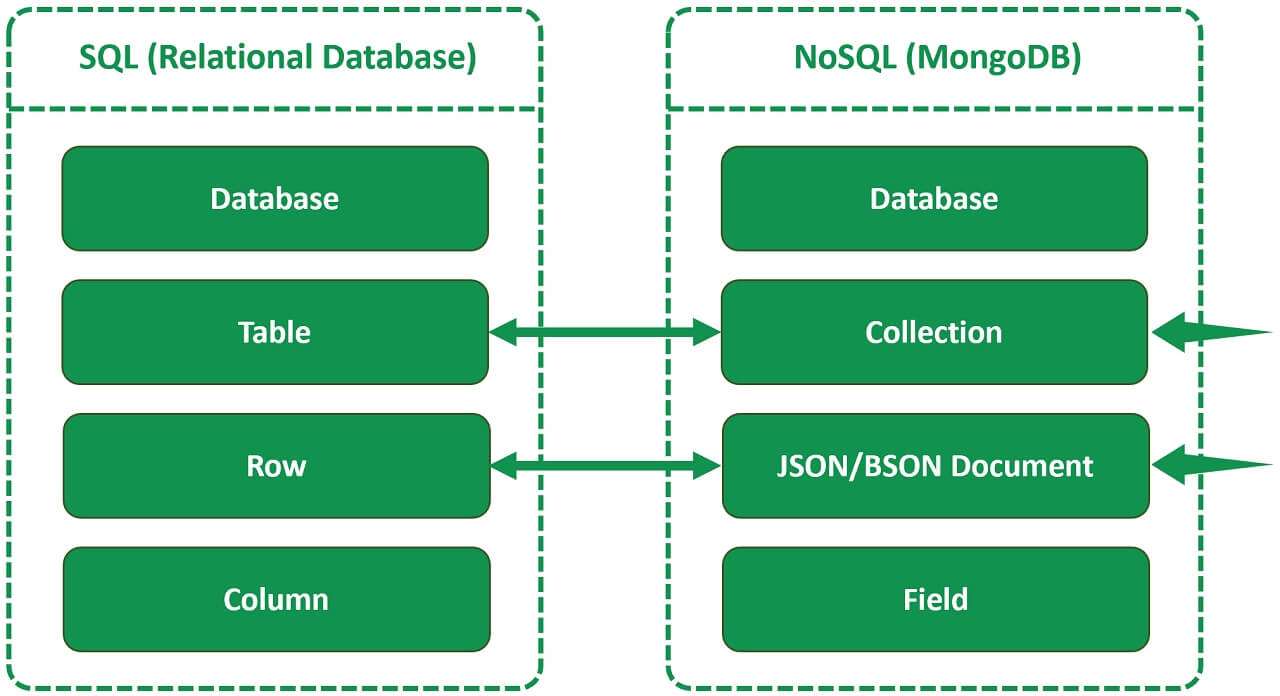
MongoDB, known for its flexibility and scalability, has evolved to support multi-document ACID transactions, even in its NoSQL environment. Introduced in version 4.0, MongoDB’s transactions behave similarly to those in traditional relational databases, allowing multiple changes to be made in a single transaction across different collections and documents.
Utilizing snapshot isolation, presents a consistent view of data, ensuring that ongoing transactions are not affected by others. Furthermore, if any part of the transaction fails, MongoDB ensures that no changes are committed, preserving atomicity.
While this post focuses on MongoDB ACID transactions, it’s also worthwhile to understand the role of storage engines in MongoDB’s overall performance and capabilities. Different storage engines offer varying levels of ACID compliance, and your choice can significantly affect your database’s efficiency and reliability.
If you’re interested in diving deeper into how different storage engines impact MongoDB’s performance and ACID compliance, we recommend reading our detailed blog post on MongoDB Storage Engines.
Traditional Relational Database Management Systems (RDBMS) and MongoDB differ in their handling of ACID transactions. While both systems aim for the same outcomes in terms of integrity, their architectures differ. RDBMSes focus on structured related data with predefined schemas, whereas MongoDB’s document-oriented approach allows more fluid data structures.
In RDBMS, transactions usually involve structured queries across tables. In contrast, MongoDB’s transactions span collections of JSON-like documents. Despite these structural differences, MongoDB has incorporated critical ACID principles, ensuring that even in a NoSQL world, the sanctity and reliability of data are upheld, drawing parallels in transactional trustworthiness with its relational counterparts.
When should I use MongoDB multi-document transactions?
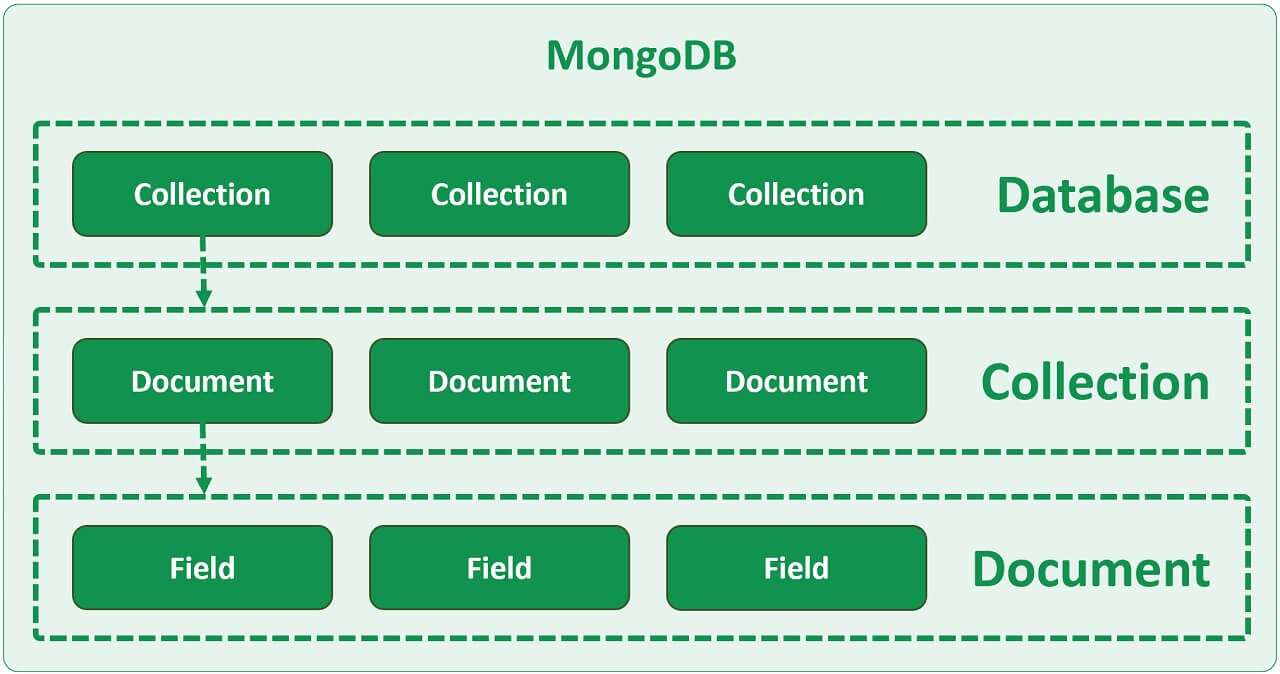
MongoDB ACID multi-document transactions should be employed when operations span multiple collections or require modifications to multiple documents concurrently. They are ideal for complex use cases where inter-related documents must be updated together, ensuring database integrity and consistency across changes. These transactions become particularly useful in scenarios like inventory management or financial operations where a chain of related data alterations is common.
Benefits and Challenges
The key benefit of using multi-document transactions is the guarantee of ACID properties across multiple operations, ensuring consistent and reliable data updates. However, they might introduce a performance overhead, especially if overused or misconfigured. It’s crucial to evaluate when the complexity of operations justifies their use, balancing the need for integrity with system performance.
Best Practices with MongoDB Database Transactions
When implementing MongoDB ACID transactions, always ensure that the four properties are upheld. Make use of session and commit functionalities to manage your transactions, ensuring that they either complete successfully or revert to the pre-transaction state. Regularly monitor the system for any inconsistencies and rectify them promptly.
Tips for optimization
- Limit the scope of transactions to what’s essential, avoiding unnecessary operations.
- Monitor transaction durations and keep them as short as possible to reduce contention.
- Structure your database schema effectively, which can greatly improve transactional efficiency.
ScaleGrid’s DBaaS solution streamlines MongoDB ACID transactions by offering automated management tools and intuitive interfaces. The platform ensures optimal performance, monitoring, and scalability, simplifying transactional complexities. By leveraging ScaleGrid, businesses can achieve more efficient, reliable, and effortless transaction management without administrative overhead.
ACID vs BASE
ACID (Atomicity, Consistency, Isolation, Durability) and BASE (Basically Available, Soft State, Eventually Consistent) represent two fundamental philosophies in the database world. While ACID emphasizes strict reliability and consistency, often at the cost of availability and partition tolerance, BASE takes a more relaxed approach, prioritizing availability over immediate consistency. In the BASE model, databases ensure that data becomes consistent over time, accepting temporary inconsistencies.
MongoDB primarily aligns with the BASE philosophy, focusing on scalability and flexibility. However, with the introduction of multi-document ACID transactions in its recent versions, MongoDB has made significant strides towards bridging the gap between the two paradigms.
It now offers developers the choice: they can leverage BASE’s scalability and resilience for many use cases while employing MongoDB ACID transactions when strict data integrity is important. This dual capability positions MongoDB uniquely, allowing it to cater to a wide range of application requirements and use cases, from high-availability systems to business-critical transactional processes.
Summary
Throughout this article, we’ve delved deep into the essence of ACID properties, their fundamental role in DBMS, and how MongoDB has embraced these tenets, providing developers with robust tools for transaction management.
We’ve compared the traditional ACID approach to the more modern BASE philosophy, highlighting MongoDB’s unique position in bridging these two paradigms. As enterprises seek reliability and flexibility in their database solutions, understanding these principles becomes crucial.
If you want to know how MongoDB compares to Redis in terms of performance, speed, and scalability, check out our Redis vs. MongoDB Performance blog post.
Elevate Your MongoDB Experience with ScaleGrid
Experience top performance and reliability with ScaleGrid’s ACID-compliant managed MongoDB service, offering features like automated backups, performance analytics, and seamless scaling to improve data integrity.
Book a demo and discover how ScaleGrid can transform your database experience!
MongoDB ACID FAQ
What Does ACID Stand for in MongoDB Transactions?
ACID stands for Atomicity, Consistency, Isolation, and Durability. These properties ensure the reliability of transactions within MongoDB databases. They serve as the foundation for executing complex operations that may involve documents and collections.
How Do MongoDB ACID Transactions Differ From Those in Relational Databases?
Unlike a traditional relational db, which focuses on structured, tabular data, MongoDB operates with a document-based model. MongoDB’s ACID transactions maintain the same standards of integrity for data but do so across flexible, JSON-like documents. This allows for a versatile approach to managing transactions, particularly useful in microservices architectures and other modern development paradigms.
Are ACID Transactions Available in All Versions of MongoDB?
Multi-document ACID transactions were introduced in MongoDB version 4.0. Earlier versions offered single-document transactions but were not ACID-compliant across multiple documents. This distinction is important when working with different versions of MongoDB.
How Do I Implement ACID Transactions in MongoDB?
Implementing an ACID transaction in MongoDB involves using specific API methods. You initiate a transaction with the startSession() method. During this session, you can execute various read and write operations. To finalize the transaction, you either commit it using commitTransaction() or abort using abortTransaction().
Should all MongoDB applications be ACID compliant?
Not all applications require ACID compliance. For instance, analytics platforms that primarily read data may not require ACID properties. However, applications that handle sensitive or critical data—such as those in finance or healthcare sectors—will benefit from ACID compliance.
How Do ACID Transactions Affect MongoDB Performance?
While ACID transactions guarantee data integrity, they can impose a performance overhead. The impact largely depends on the system architecture, hardware capabilities, and the complexity of the transactions. Therefore, it’s recommended to assess your specific needs and configure each ACID transaction accordingly.
Can I Use ACID Transactions in a Sharded MongoDB Cluster?
Starting from MongoDB version 4.2, you can use ACID transactions in a sharded cluster. This allows for even greater scalability while still maintaining a high level of data integrity.


